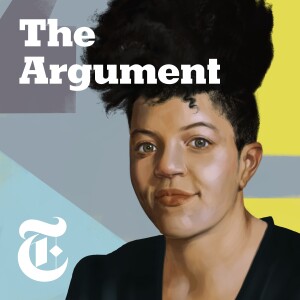
Book banning has surged in America’s classrooms. The free speech advocacy organization PEN America has compiled a list of more than 1,500 reported instances of books being banned in public schools and libraries in less than a year. As students head back to school, what are the books we do and don’t want our kids to read? And what are the values America’s students are meant to take away from the pages of books?
So on this episode of “The Argument,” Jane Coaston is talking to two writers and teachers to figure out what high school English syllabuses should look like in 2022. Kaitlyn Greenidge is a contributing Opinion writer and novelist who has taught high school English and creative writing, and designed English curriculums for for-profit companies. Esau McCaulley, also a contributing Opinion writer, is an associate professor at Wheaton College.
Greenidge argues that at their best, English classes and the books read in them should be a place to find mutual understanding. “When you’re talking about what we should read in English class, you’re really talking about how to make a common language for people to talk across,” Greenidge says. But the question of whose stories are included in that common language — especially when it comes to what makes up the Western canon — is especially fraught. And to McCaulley, how teachers put a book in context is just as important as what their students are reading in the first place. “That’s what makes discussions around the canon complicated,” he says. "Because the teacher has to be able to see these texts as both powerful and profoundly broken, because they’re written by humans who often have those contradictions in themselves.”
Mentioned in this episode:
- From New York Times Opinion: “What Is School For?”
(A full transcript of the episode will be available midday on the Times website.)
Unlock full access to New York Times podcasts and explore everything from politics to pop culture. Subscribe today at nytimes.com/podcasts or on Apple Podcasts and Spotify.
More Episodes
 2022-11-09
2022-11-09
 2022-10-19
2022-10-19
 2022-10-12
2022-10-12
 2022-09-28
2022-09-28
Create your
podcast in
minutes
- Full-featured podcast site
- Unlimited storage and bandwidth
- Comprehensive podcast stats
- Distribute to Apple Podcasts, Spotify, and more
- Make money with your podcast
It is Free
- Privacy Policy
- Cookie Policy
- Terms of Use
- Consent Preferences
- Copyright © 2015-2024 Podbean.com





